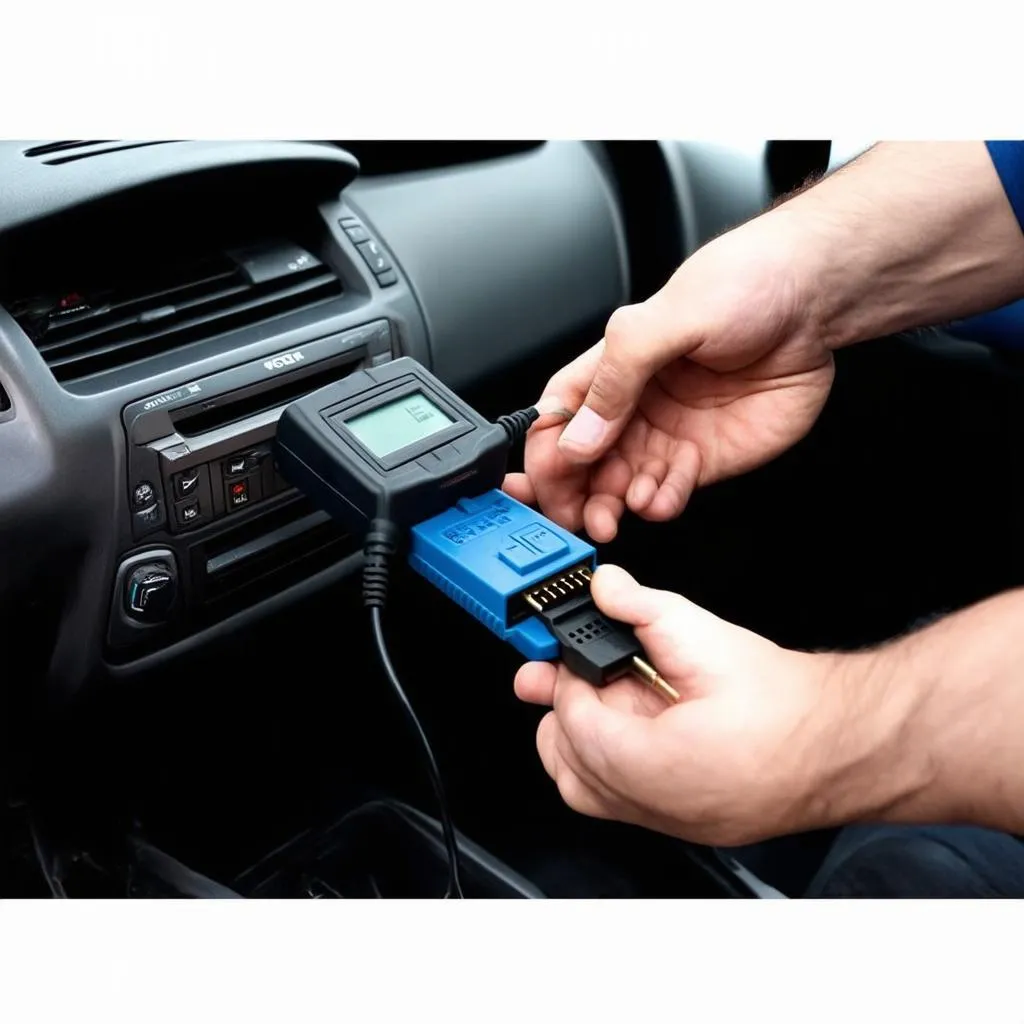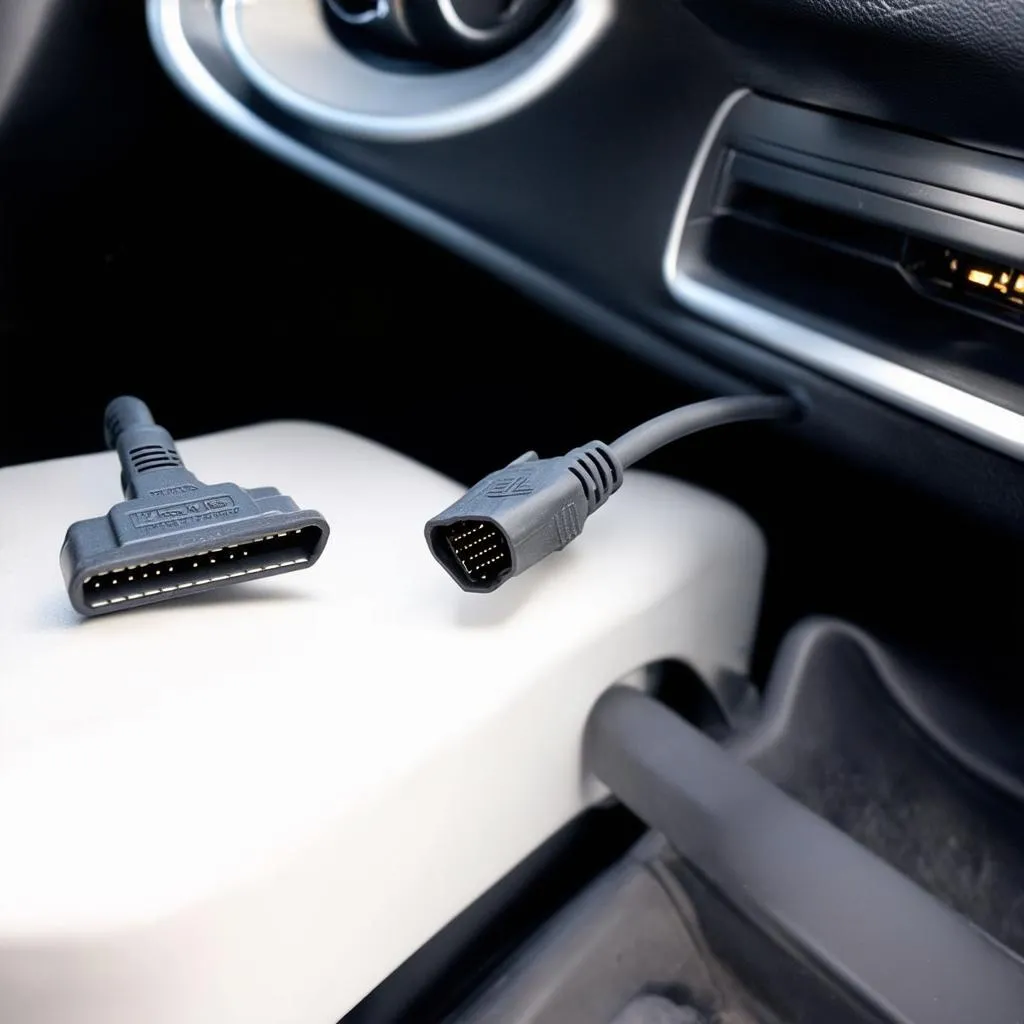VCDS long coding guides are essential for anyone looking to delve deeper into their car’s settings and functionalities. This guide will provide a detailed overview of VCDS long coding, addressing common questions, practical applications, and troubleshooting tips. We’ll explore everything from basic principles to advanced techniques, helping you confidently navigate the world of vehicle customization and diagnostics. 01826 vcds supply voltage terminal 30 helps to ensure the system operates correctly.
Understanding the Basics of VCDS Long Coding
VCDS (Vag-Com Diagnostic System) is a powerful software tool that allows users to access and modify the control modules of Volkswagen, Audi, Seat, and Skoda vehicles. Long coding, specifically, refers to the process of changing individual bits within a control module’s coding string to enable or disable specific features. This differs from short coding, which typically involves changing pre-defined values. Before diving into vcds long coding guides, it’s crucial to understand the underlying binary system and how each bit represents a specific function.
Think of long coding as a series of on/off switches. Each switch controls a different feature, and by manipulating these switches, you can customize your car’s behavior. This customization power is why understanding vcds long coding guides is so valuable.
Why Are VCDS Long Coding Guides Important?
VCDS long coding guides provide a roadmap for safely and effectively modifying your car’s settings. They offer invaluable insights into the function of each bit within a control module, preventing unintentional changes that could lead to malfunctions. For instance, you might want to enable automatic locking, change the behavior of your daytime running lights, or adjust the sensitivity of your rain sensor. VCDS and its associated long coding guides provide the tools to accomplish these customizations.
 VCDS Long Coding Interface
VCDS Long Coding Interface
Decoding the Structure of a Long Coding String
A long coding string typically consists of a series of hexadecimal characters. Each hexadecimal character represents four bits, and each bit corresponds to a specific function within the control module. Understanding this structure is fundamental to interpreting vcds long coding guides.
How to Interpret VCDS Long Coding Guides
Most vcds long coding guides provide a breakdown of each bit within the long coding string. This breakdown usually explains the function of each bit and the possible values it can take. Some guides even offer step-by-step instructions for enabling or disabling specific features.
“Understanding the binary representation is like learning the secret language of your car,” says automotive electronics expert, Dr. Robert Carter. “With this knowledge and the appropriate vcds long coding guides, you can unlock a world of customization possibilities.”
Practical Applications of VCDS Long Coding
The applications of VCDS long coding are vast and varied. From enabling hidden features to diagnosing complex electrical issues, understanding long coding opens up a wealth of possibilities. vcds diag can offer a deeper level of access.
Common Use Cases for VCDS Long Coding
- Enabling Convenience Features: Activating features like automatic locking, coming home lights, or needle sweep.
- Customizing Lighting: Adjusting the behavior of daytime running lights, cornering lights, or interior lighting.
- Modifying Comfort Settings: Changing the sensitivity of rain sensors, adjusting automatic climate control parameters, or customizing seat heating options.
- Troubleshooting Electrical Issues: Diagnosing and resolving problems with lighting, power windows, or other electrical systems. Knowing how to check vcds battery voltage is also crucial.
Troubleshooting Common Long Coding Issues
While VCDS long coding can be incredibly useful, it’s important to proceed with caution. Incorrectly modifying a long coding string can lead to unexpected behavior or even system malfunctions.
Tips for Avoiding Problems with Long Coding
- Always back up your original coding: Before making any changes, always save a copy of your original long coding string. This will allow you to revert back to the original settings if necessary.
- Use reputable VCDS long coding guides: Ensure that you’re using reliable and up-to-date guides. Inaccurate information can lead to coding errors.
- Proceed incrementally: Make changes one bit at a time and test the results after each modification. This helps to isolate any issues and makes troubleshooting easier.
“A little caution goes a long way when it comes to long coding,” advises Sarah Miller, a certified automotive technician. “Always double-check your work and be prepared to revert to the original settings if something goes wrong.”
Conclusion
VCDS long coding guides are a valuable resource for anyone looking to customize or diagnose their vehicle. By understanding the basics of long coding and following best practices, you can unlock the full potential of VCDS and tailor your car to your specific needs. Remember to always back up your original coding and proceed with caution. Mastering vcds long coding guides opens up a world of possibilities for enhancing your driving experience.
FAQs
- What is the difference between long coding and short coding in VCDS?
- Where can I find reliable VCDS long coding guides?
- Is it safe to modify the long coding of my car?
- What should I do if I make a mistake while long coding?
- Can VCDS long coding void my car’s warranty?
- Are there any risks associated with long coding?
- How can I learn more about VCDS and its functionalities?
Need assistance with VCDS diagnostics, programming, or remote software installation? Contact us via WhatsApp: +1 (641) 206-8880, Email: [email protected], or visit us at 276 Reock St, City of Orange, NJ 07050, United States. Our 24/7 customer support team is always ready to help.



